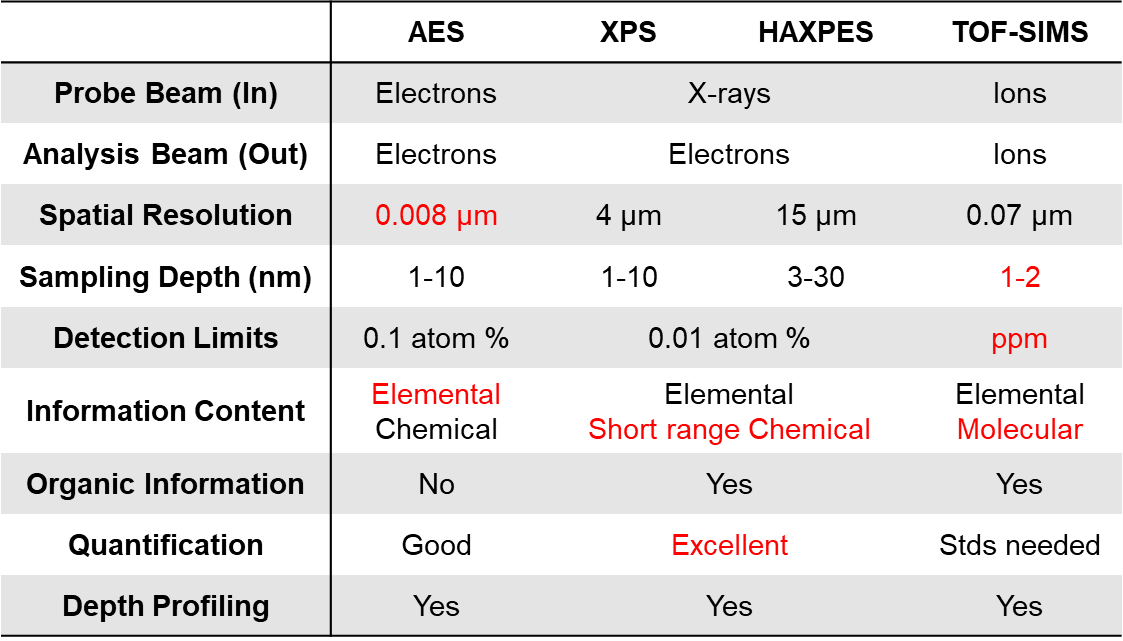Thank you for your interest in this survey.
At this time, we are only seeking participants who have experience with TOF SIMS, AES, or XPS surface analysis instruments.
What is surface?
A surface is the outermost layer of any physical object. It is the portion of the object that can be perceived by an observer using their sense of sight and touch and is the portion with which surrounding materials first interact. The outermost part of a material is an extremely important component responsible for interfacial characteristics such as chemical reactivity, adhesion, wetness, electrical properties, optical properties, corrosion-resistance, friction, and biocompatibility of the material.
Why is surface analysis important?
Surface analysis measurements provide a means to correlate performance with surface composition and structure. This knowledge can be used to accelerate the development of new materials or improve existing materials' performance. The ability to characterize thin-film structures, which can be imagined as multiple discrete layers separated by interfaces provides a unique opportunity to examine the composition of materials in each layer and study interactions between them. The ability to analyze sub-micron features, defects, or particulate contaminants is of critical importance to increasing product yield in all industrial applications, including semiconductor device fabrication, hard disk read/write head and magnetic media fabrication, specialty glasses and mirrors, composite materials, renewable energy and power storage, etc.
How is surface analysis performed?
In a surface analysis, the signal from the surface is being stimulated by a primary probe such as photos, X-rays, ions, or electrons. Among the signals generated as a result of stimulation, particles such as electrons and ions are created within the top few monolayers. Their properties, including charge polarity, energy or mass, are analyzed to reveal the chemical structure of the surface.
Sometimes, information on depths from several dozen nanometers to several hundred nanometers is needed. In such cases, a depth profile analysis can be employed. Deeper layers can be examined via depth profiling, during which a beam of ions is used to remove thin layers of materials to expose deeper layers for subsequent analysis.
When performing the analysis, the solid sample is placed in a vacuum for measurement. Inside the analysis instrument, a reduced pressure state called an ultra-high vacuum, with a pressure one billionth of atmospheric pressure or lower, is created. By controlling charged particles such as X-rays, ions, and electrons, and irradiating the surface in such an environment, information on the surface's chemical structure can be accurately detected.
Properties of three main surface analysis techniques


